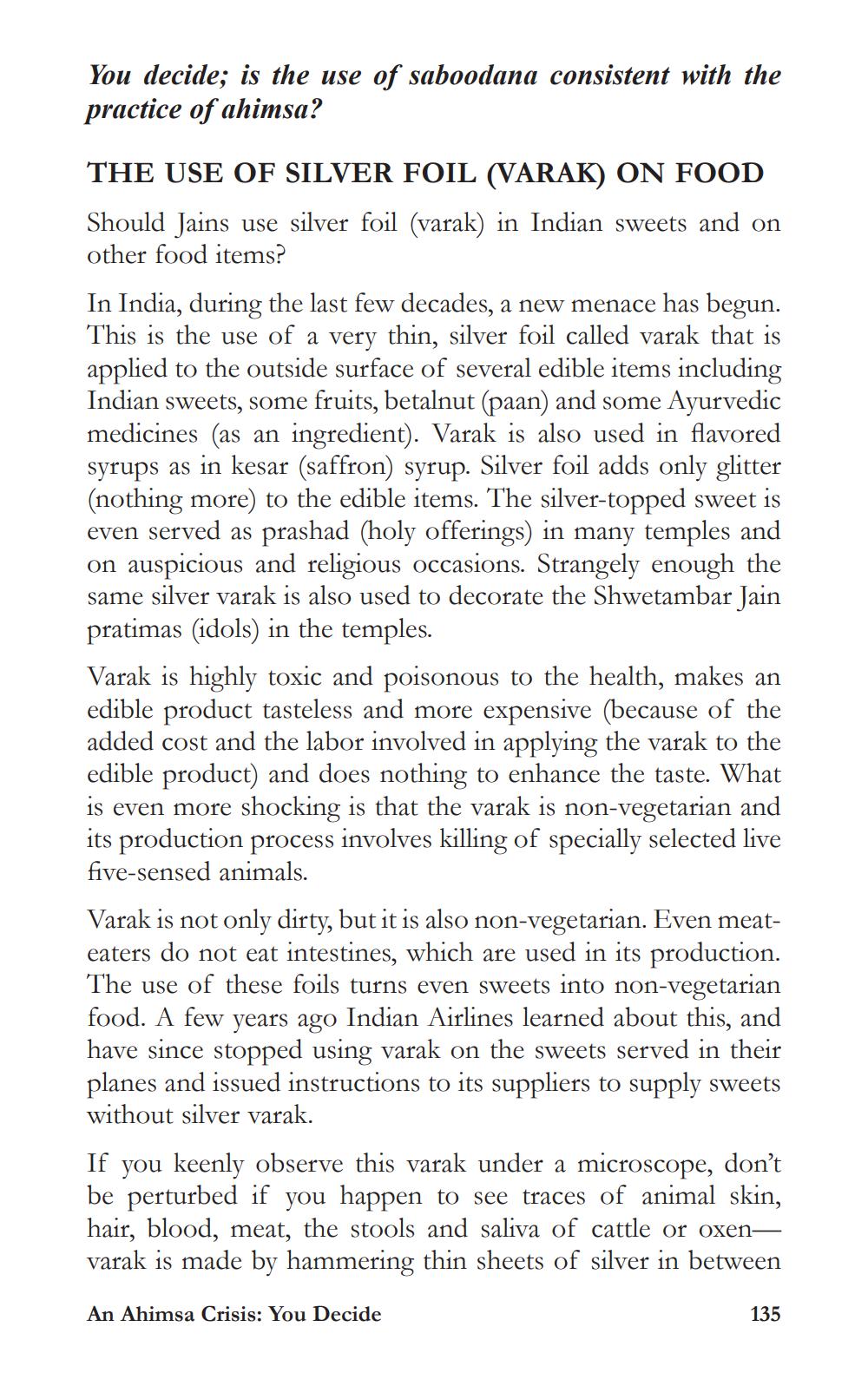________________
You decide; is the use of saboodana consistent with the practice of ahimsa?
THE USE OF SILVER FOIL (VARAK) ON FOOD Should Jains use silver foil (varak) in Indian sweets and on other food items? In India, during the last few decades, a new menace has begun. This is the use of a very thin, silver foil called varak that is applied to the outside surface of several edible items including Indian sweets, some fruits, betalnut (paan) and some Ayurvedic medicines (as an ingredient). Varak is also used in flavored syrups as in kesar (saffron) syrup. Silver foil adds only glitter (nothing more) to the edible items. The silver-topped sweet is even served as prashad (holy offerings) in many temples and on auspicious and religious occasions. Strangely enough the same silver varak is also used to decorate the Shwetambar Jain pratimas (idols) in the temples. Varak is highly toxic and poisonous to the health, makes an edible product tasteless and more expensive (because of the added cost and the labor involved in applying the varak to the edible product) and does nothing to enhance the taste. What is even more shocking is that the varak is non-vegetarian and its production process involves killing of specially selected live five-sensed animals. Varak is not only dirty, but it is also non-vegetarian. Even meateaters do not eat intestines, which are used in its production. The use of these foils turns even sweets into non-vegetarian food. A few years ago Indian Airlines learned about this, and have since stopped using varak on the sweets served in their planes and issued instructions to its suppliers to supply sweets without silver varak. If you keenly observe this varak under a microscope, don't be perturbed if you happen to see traces of animal skin, hair, blood, meat, the stools and saliva of cattle or oxenvarak is made by hammering thin sheets of silver in between
An Ahimsa Crisis: You Decide
135




